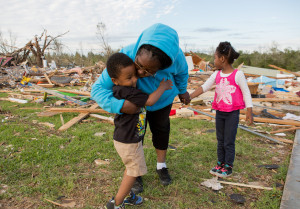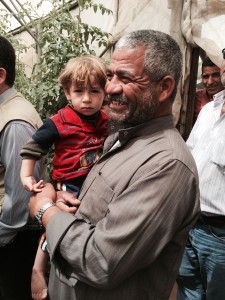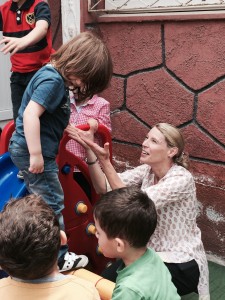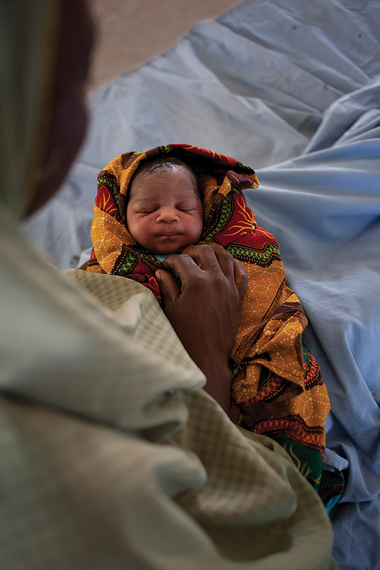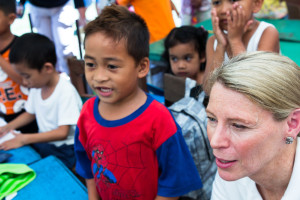My latest revelation on development came in an unlikely place: not a refugee camp for Syrians or a small hut in Nepal but in a beautiful building in Venice built in the mid-1700s—Scoula Grande di San Giovanni Evangelista—which was the site of a ceremony for the Pilosio Peace award. Pilosio is an Italian construction company that helps to build structures all over the world. Their young, innovative CEO Dario Roustayan developed the Building Peace awards four years ago to honor the spirit of building by bringing together the construction industry and the making of a better world. This year’s winner, Samiya Nkrumah, the daughter of the iconic former President of Ghana Kwame Nkrumah, is building an impressive library for her country’s children in honor of her father. She and I got a chance to meet and talk a bit about the prime importance of education in a child’s life—and in a country’s future. She’s an amazing woman that you may one day see as a future President of Ghana (if I had to bet).
I also had the honor to join a very eclectic and interesting panel of women, each building peace in a different way. There was Betty Williams, Nobel Peace prize winner from 1976 for her breakthrough work on speaking out for peace during the “troubles” in Northern Ireland. Siba Shakib, an Iranian filmmaker and best-selling author, spoke passionately about her work documenting the plight of Syrian refugee children who have fled the violence and chaos of their home country for over the past three years. Khalida Brohi, a young Pakistani woman and leading advocate against honor killings in Pakistan, told her incredible story as the child of a 9-year old Pakistani “bride” and even announced her own engagement at the event. And Italian businesswoman and entrepreneur Luisa Todini spoke of the challenges of being a woman in the male-dominated world of construction and how her leadership style helped her make a difference through work and her personal life. I focused on the role of mothers as builders of peace (which often starts with stable families), the founding of Save the Children by Eglantyne Jebb, a woman way ahead of her time, as well as my own path to working as a leader and the key role of women in development inside countries today.
I was struck by some key similarities in our very different stories. There was a common thread for each of us on the importance of strong role models and family members who supported us. Whether fathers, mothers, colleagues, founders or bosses, we all had help along the way in our efforts to help make the world a little better. It also struck me that frequently, the source of our passion came from seeing injustices against children. Whether it was Siba’s work to capture the heartbreaking drawings of child refugees or Betty’s witnessing of three Irish children killed by a car driven by an IRA member shot dead at the wheel, children were a consistent theme that drives all of us in our work.
The audience was made up of a handful of people working on these issues full-time, but primarily of those working in the construction sector, including many of Pilosio’s customers—from boat builders to leading developers in Dubai. Former Secretary General to the UN Kofi Annan gave a wonderful keynote speech that focused again on the importance of women in driving stability and peace, starting with greater economic equality for half the earth’s population, who today own only 1% of its wealth. And I think the light bulb went off for many of these leading business men and women when they saw what a significant role the private sector can play in making sure the playing field is leveled and bringing their skills to development challenges.
A final highlight was the unveiling of a new shelter developed by Pilosio in conjunction with the Jolie-Pitt Foundation, allowing Syrian refugees to build their own homes. Giving dignity back to refugees that have lost everything is a key challenge as the world experiences one of the biggest displacements of people in history. From Syria alone, 3 million have fled their homes, half of whom are children. Save the Children Italy will exhibit the new structure in Rome at Expo 2015, giving eight million people a chance to see it and we are looking at testing the shelter in Jordan in our work with Syrian refugees there.
It was a night when women of peace, the private sector, and those intent on building a better world came together and a night I was happy to be a part of. It also illustrated two trends that I think will become even more important in the years to come—the role of women in driving a country’s future and the convergence of the private sector and development agencies to bring together the skills of both to make the future better for children.


